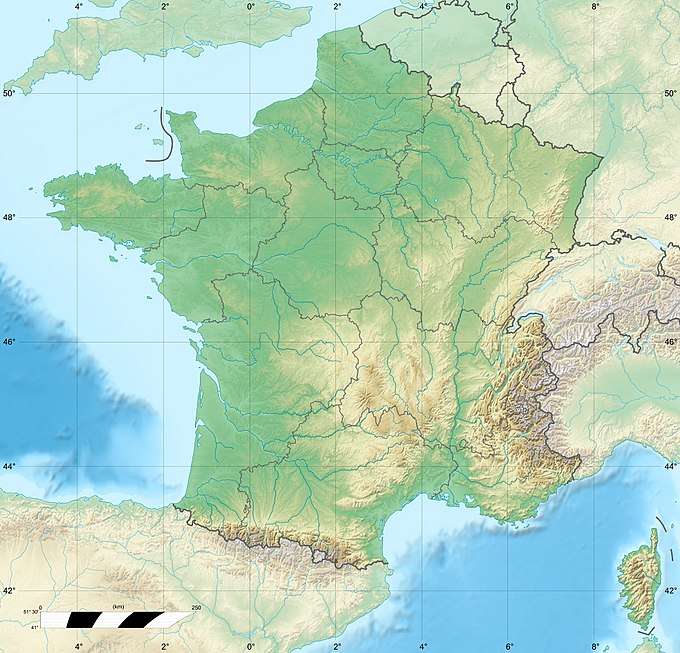Sivens Dam
| Sivens Dam | |
|---|---|
 Location of Sivens Dam in France | |
| Official name | Barrage de Sivens |
| Country | France |
| Location | Lisle-sur-Tarn |
| Coordinates | 43°55′0″N 1°46′10″E / 43.91667°N 1.76944°ECoordinates: 43°55′0″N 1°46′10″E / 43.91667°N 1.76944°E |
| Status | Cancelled |
| Construction began | August 2014 |
| Construction cost | 8.4 million euros |
| Owner(s) | Department of Tarn |
| Dam and spillways | |
| Type of dam | Embankment dam |
| Impounds | Tescou |
| Height | 12 m (39 ft) |
| Height (thalweg) | 12.8 m (42 ft) |
| Length | 304 m (997 ft) |
| Reservoir | |
| Total capacity | 1,500,000 m3 (1,200 acre⋅ft) |
| Surface area | 42 ha (100 acres) |
| Maximum length | 2 km (1.2 mi) |
Sivens Dam (Barrage de Sivens) is a dam which in 2014 was planned for construction across the Tescou, a tributary of the Tarn in the basin of the Garonne in Southern France. The construction site is 10 km north of Lisle-sur-Tarn, in the Department of Tarn (Midi-Pyrénées). The dam is named after the nearby Forest of Sivens. Construction work began in 2014. The project has since been closed.[1]
On 26 October 2014, Rémi Fraisse, a 21-year-old student protesting against the construction project, was killed after being hit in the back by a stun grenade, sparking further protests, some of which were violent.[2]
Description
Sivens is in the Tescou, a tributary of the Tarn in the basin of the Garonne. A barrage project was initiated for the formation of a water reservoir with a volume of 1.5 million cubic metres used especially for irrigation of agricultural land and the control of the low water Tescou. The impact of the project lies in retaining the flooding of 12 hectares of wetland. Countervailing measures were planned to restore a total area of 19.5 hectares of wetlands. This project was to have benefited from 30% European funds (Fedear). The main actors of the project were the general council of Tarn region, Water Agency Adour Garonne and the development company "Slopes of Gascony". In 2011, a collective was created against this project : "Tant qu’il y aura des bouilles". Hundreds of people came to the zone planned for flooding to live there and to prevent the construction of the dam.[3][4][5] Declared illegal, the project is now closed.[1]
References
- 1 2 http://www.ladepeche.fr/article/2016/07/02/2377539-sivens-la-deliberation-d-utilite-publique-annulee.html
- ↑ The Guardian, 28 October 2014, French Socialists and Greens at odds following death of Sivens dam protester, by Anne Penketh in Paris
- ↑ Le Figaro, 27 Feb 2014, Barrage/Tarn : expulsion des opposants
- ↑ Libération, 2 May 2014, À Sivens, un autre Dame-des-Landes
- ↑ La Dépêche du Midi 31 August 2014, Semaine cruciale à Sivens pour le projet de barrage